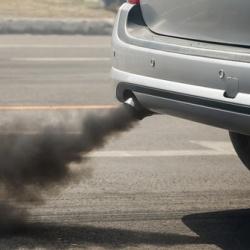
Steve Milloy, who runs the website Junkscience.com, is first out of the gate telling the New England Journal of Medicine that they may have been victims of scientific misconduct on the part of the authors behind “Air Pollution and Mortality in the Medicare Population” and the accompanying editorial “Air Pollution Still Kills” in the June 29th, 2017 issue.
Milloy's contention is that omission of material information is scientific misconduct. He writes to editor-in-chief Dr. Jeffrey M. Drazen that according to the standards for scientific misconduct applicable to studies funded by the Department of Health and Human Services established in 42 CFR Part 93 ⎯ Public Health Service Policies On Research Misconduct, “research misconduct” means:
... fabrication, falsification, or plagiarism in proposing, performing or reviewing research or in reporting research results.
(a) Fabrication is making up data or results and recording or reporting them.
(b) Falsification is manipulation research materials, equipment or processes or changing or omitting data or results such that the research is not accurately represented in the research record. [Emphasis added]
What omission? Quite a bit, actually. Namely, solid evidence that rendered the claims in the article and editorial about air pollution and mortality irrelevant.
- Young S. et al., "Air Quality and Acute Deaths in California", Regul Toxicol Pharmacol, https://doi.org/10.1016/j.yrtph.2017.06.003. “Neither PM2.5 nor ozone added appreciably to the prediction of daily deaths. These results call into question the widespread belief that association between air quality and acute deaths is causal/near-universal.” Although this study became available at Regulatory Toxicology and Pharmacology in June 2017, it was on Cornell University’s arXiv.org web site as far back as February 10, 2015 (https://arxiv.org/abs/1502.03062) and was presented at a poster session at the 2016 annual meeting of the Health Effects Institute (HEI).
HEI is one of the funders of the NEJM study and so they certainly knew about this contradictory evidence.
- Enstrom J., "Fine Particulate Matter and Total Mortality in Cancer Prevention Study Cohort Reanalysis", Dose-Response, http://journals.sagepub.com/doi/10.1177/1559325817693345. (Published March 28, 2017). “No significant relationship between PM2.5 and total mortality in the CPS II cohort was found when the best available PM2.5 data were used.”
The study was published three months ahead of the NEJM study and Dr. Drazen had personally rejected the paper for NEJM on June 28, 2016. Yet he then went on to approve a paper that pretended contradictory evidence did not exist, Milloy notes.
- Greven S. et al., "An Approach to the Estimation of Chronic Air Pollution Effects Using Spatio-Temporal Information", Journal of the American Statistical Association, http://amstat.tandfonline.com/doi/abs/10.1198/jasa.2011.ap09392. Published January 12, 2012. “[W]e are not able to demonstrate any change in life expectancy for a reduction in PM2.5.”
One of the co-authors of that study, Francesca Dominici, is also a co-author on the NEJM study. He doesn't even seem to recall he debunked his new paper with an old one.
As readers of the American Council on Science and Health know by now, epidemiology is statistical and does not establish causation. Despite that, EPA has developed a worrisome habit of embracing epidemiology as being some kind of super-science above toxicology and biology, assuming the epidemiologic results are valid and they will discover a biological mechanism later. It's terrible methodology but explains a lot of EPA behavior over the last decade.
EPA conceded that point in litigation involving PM2.5:
[E]pidemiological studies do not generally provide direct evidence of causation; instead they indicate the existence or absence of a statistical relationship. Large population studies cannot assess the biological mechanisms that could explain how inhaling [PM2.5] can cause illness or death in susceptible individuals.
So why would a magazine just publish a claim that even EPA, beset by zeal to make the perfect the enemy of the good by continuing to declare more things in the air necessary to ban, can't show is harmful? As Milloy writes, if PM2.5 kills, then it kills everywhere, in the same way, and all the time, and every study result should either be consistent with that hypothesis or be explained away as flawed or faulty.
Instead of killing everywhere, there is no evidence of it ever causing acute deaths anywhere.
Source: Air Pollution And Deaths: Association Without Causation



